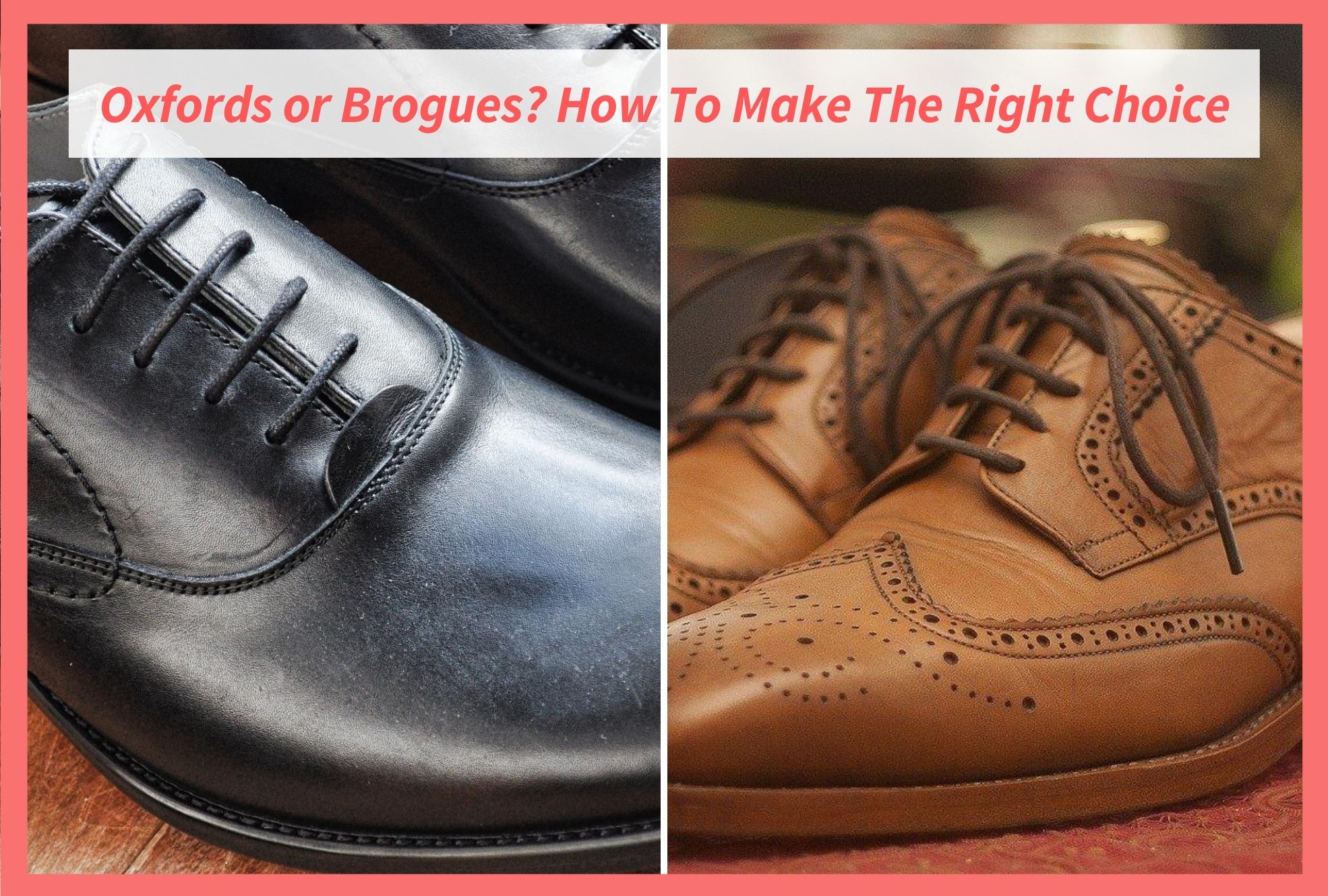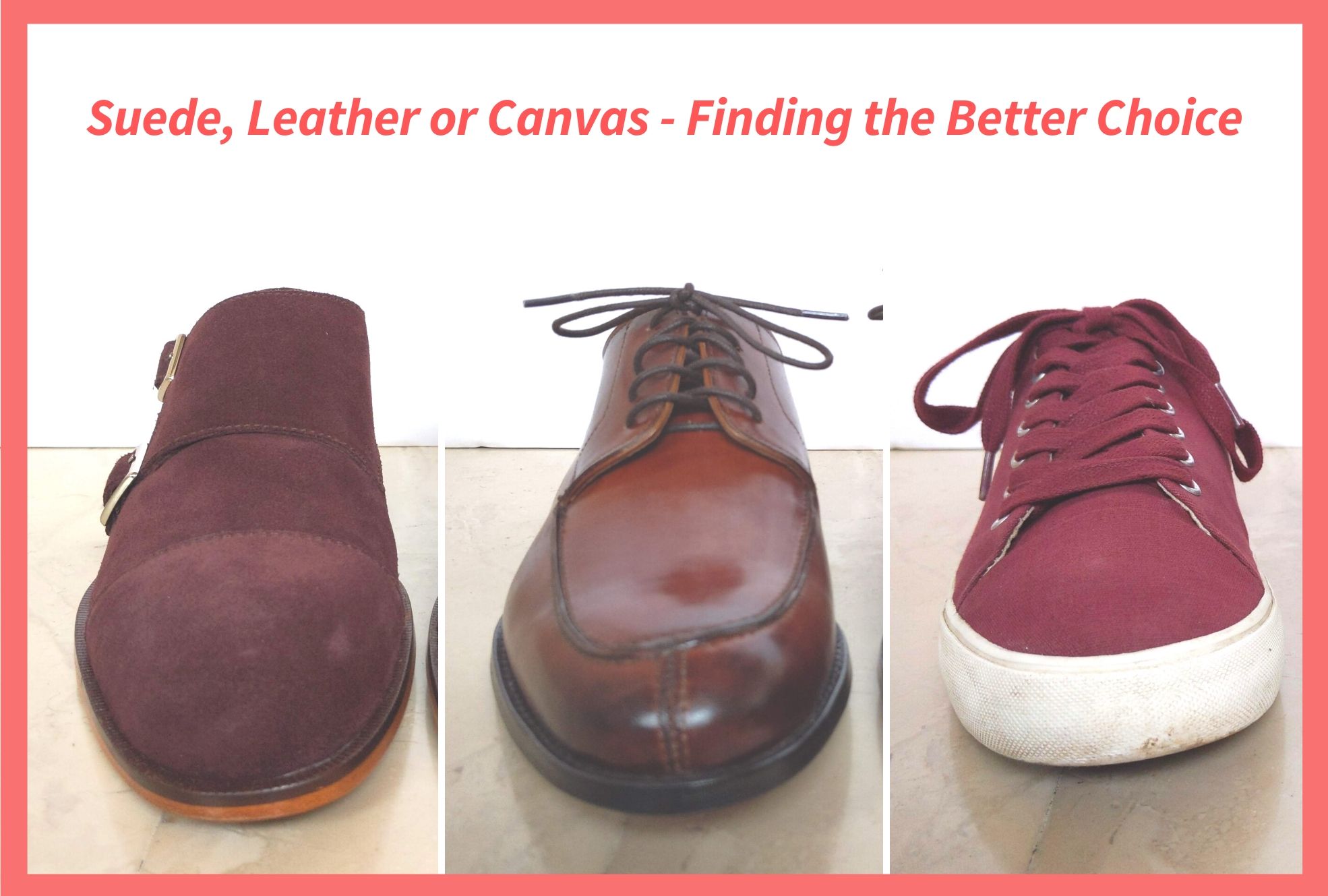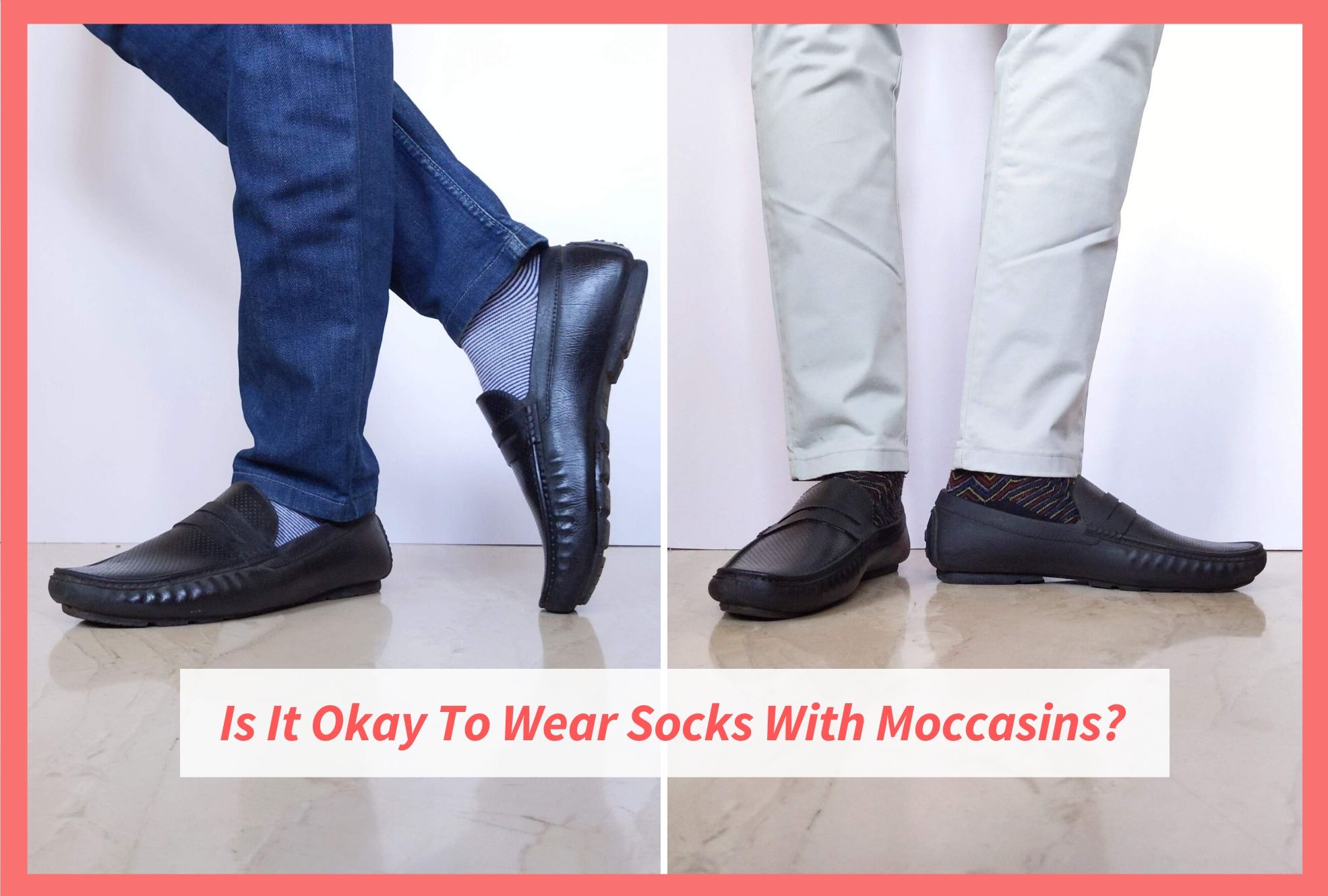“Running is the greatest metaphor for life, because you get out of it what you put into it.”
Oprah Winfrey
This analogy by the all-time Queen of Talk Shows couldn’t be more accurate.
But just like life, running can get a little bit easier and be more enjoyable if you have the right tools for it – the will to carry on, and the right pair of running shoes.
With each passing day, more and more people are choosing running as their desired form of exercise. For good reasons, that too. You don’t need much to get into running, you can run anywhere, and it can do wonders for your cardiovascular health over time.
And what better way to track and measure your results than by running in a marathon? Marathons have been gaining popularity for a while now – over the last 10 years, participation in India alone has risen by a whopping 229%! The statistic is definitely a positive and encouraging one, but it also makes me wonder if the enthusiastic runners are equipped with shoes that are suited best for their feet.
Running might seem fairly simple on the surface – we’ve been doing it since forever – but I can assure you there are more technicalities to it that you’d think. My running style might differ from yours, which is why the type of running shoes that will help us perform our respective best, will be different too.
This article dives into all such tips that will help you choose a running shoe to maximize your marathon potential for speed and comfort. It doesn’t matter if you’re a beginner or a seasoned runner, you’re sure to take something from this post 🙂
Get. Set. Go!
1) Pick shoes meant specifically for road running
Marathons happen on roads and pavements, which are smooth surfaces. On the other hand, fields and forest/mountain trails are rocky and uneven. The shoes made for such trails are called trail running shoes and are very different from that meant for road running.
How to identify a road running shoe:
Check the bottom of the shoes for lugs and aggressive tread patterns. If present, then they are trail-running shoes; the lugs are meant to give a better grip on uneven terrains. If the shoe does not have deep lugs, then it is a road running shoe
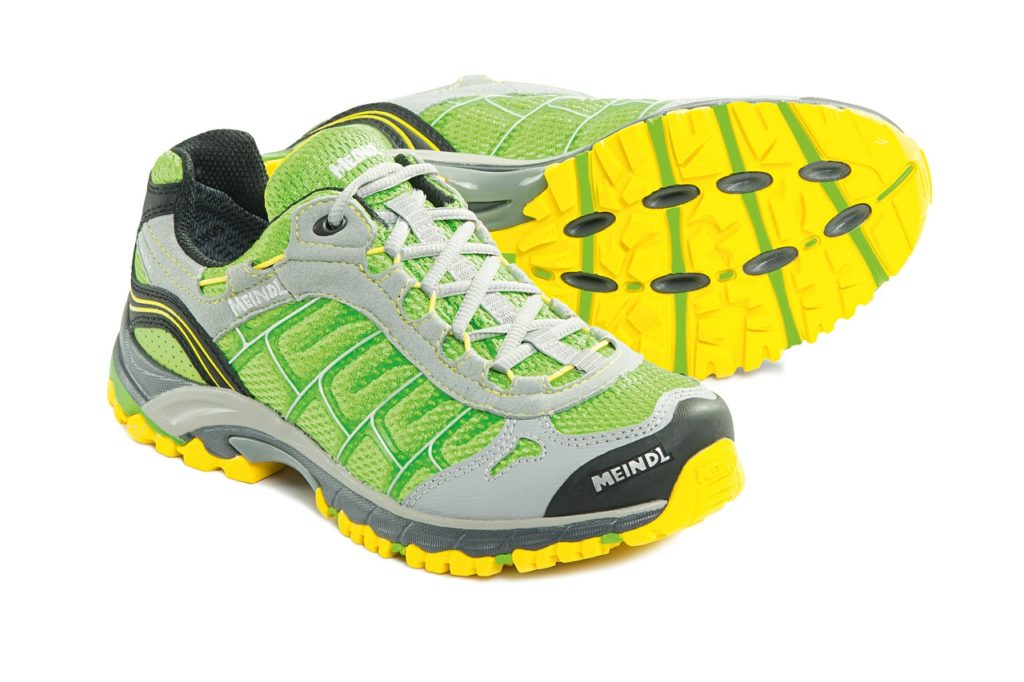
Road running shoes could have lugs too, but they’ll not be as deep and prominent as these
2) Check the Heel to Toe drop
The Heel to Toe drop indicates the difference in height between the heel and the forefoot i.e it tells you how high the heel is raised as compared to the forefoot.
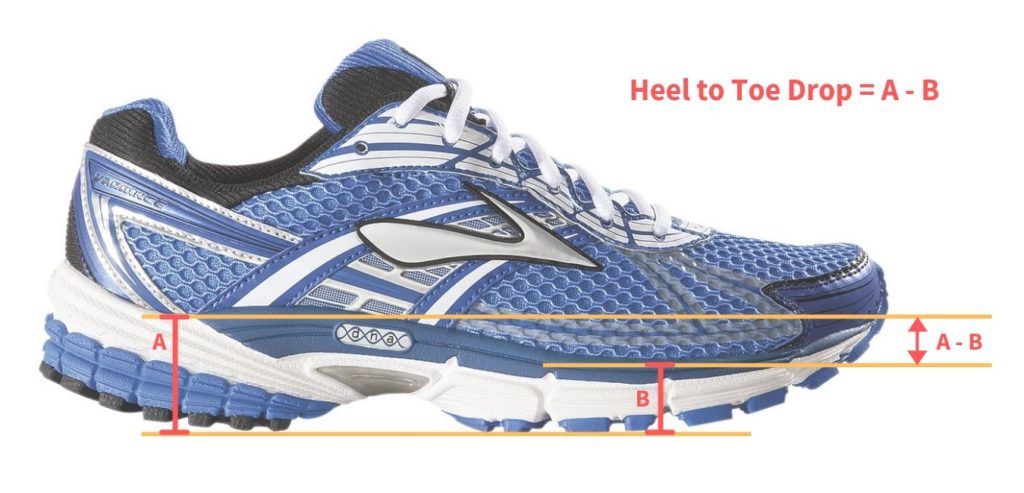
The ideal heel to toe drop for you will depend on your style of running in terms of foot strike – heel striker, midfoot or forefoot runner.
- If your heels strike the ground first when you run then you’re a heel striker, which means that you’ll need a greater heel to toe drop (> 8 mm) for better shock absorption in the heel.
- If your forefoot or midfoot hits the ground first, then you need a minimal heel to toe drop (3 – 8mm) because the extra support in the heel area is not required
Pace Athletic has a very nice illustrated article on the foot strike and heel-toe drop
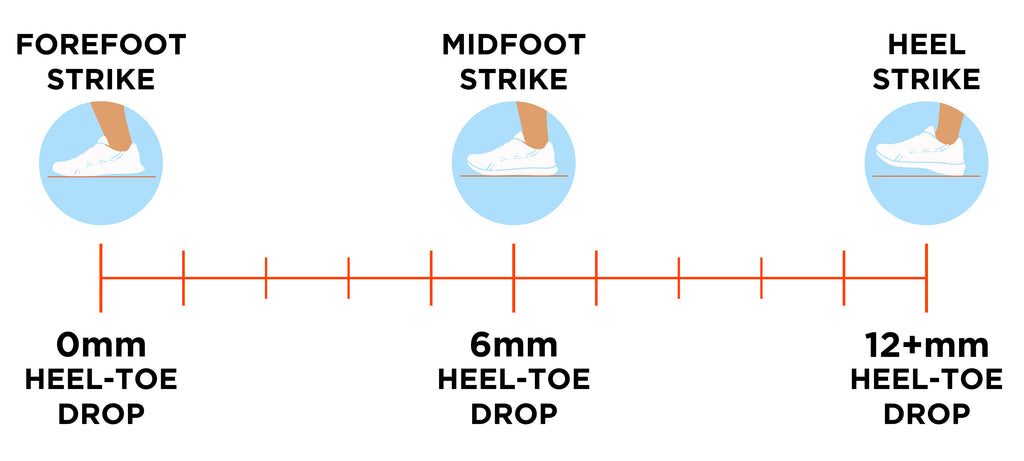
How to identify your running style:
Look at the wear pattern on your old/current running shoes. If the tread (the patterns at the bottom of the shoe) is fading in the forefoot or midfoot area then you’re most likely a forefoot/midfoot striker respectively. If the wear is in the heel region, then you’re a heel striker.
3) Look for the presence/absence of medial post
Medial posts are separate parts of the sole, that are fitted along the inner arch of each shoe and are made of harder and denser material than the rest of the sole. It is designed to avoid excessive rolling inwards of the foot (overpronators) in people with flat/low arches.
However, if you have feet with medium or high arches then the medial post isn’t necessary for you as the pronation of your foot while running will not be that high
To test if the shoe you’re looking at has a medial post, check the midsole on the inside arch part of the shoe. Medial posts will generally be slightly different in colour and harder to touch than the rest of the midsole. Shoes with such medial posts are often categorised as “stability shoes”
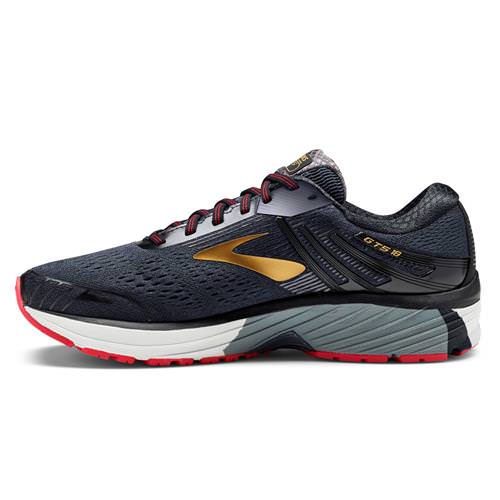
Notice the grey colour variation on the sole. This indicates the presence of the medial post
How to determine your foot arch and pronation:
TEST 1: WEAR PATTERN ON OLD SHOES –
Here we’ll look at the wear and tear along the tread on the outsoles, just like we did to identify the running style. However, if your current/old pair of shoes do not have significant miles on them, then this test might not be of much help, and you should skip to Test 2
- If the tread is worn out along the inside of the shoe, you’re likely to have a flat/low arch and overpronate when you run
- If the tread fading is uniform along the center of the shoe then you have a neutral arch
- If the tread fades more along the outer region, it means that you have high arches and are most likely underpronating (or supinating)
TEST 2: WET FEET TEST –
This test involves slightly wetting your feet and then stepping on a piece of paper (chart paper is a good option) to check the imprint that your foot leaves on it. Take care that your feet are not soaking wet, that will cause the paper to get water all around and hide the actual footprint.
You can then compare the footprint with the below image to determine your arch types
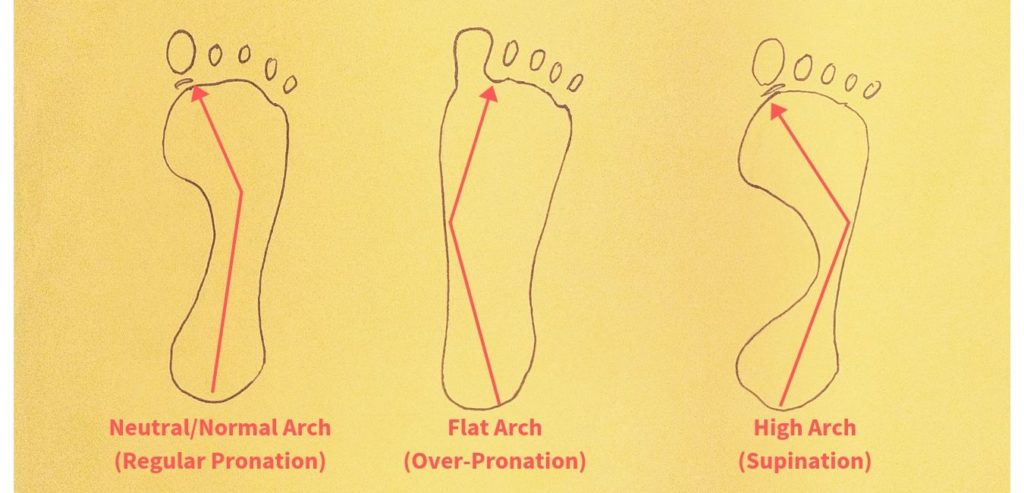
4) Consider the weight and cushioning in the shoe
This is where your marathon goals and experience will come into the picture.
Experienced runners will have tweaked their running style over time and would be looking to beat their best times. So speed will be an important factor for them, which means lighter shoes
On the other hand, beginners will need some stability and comfort to get used to the long-distance running involved in a marathon. Slightly heavier shoes with ample cushioning will serve beginners the best in this regard.
Generally speaking, the weight and cushioning of the shoes will be directly related to each other – the heavier the shoe, the more cushioning it will provide. With new emerging technologies there are some exceptions to this rule, but it will prove to be true for most shoes.
You can check the thickness of the midsole to get a very basic idea of the cushioning a shoe will provide. The thicker the midsole, the more materials they’ve added to it to cushion your feet 🙂
5) Try on different pairs
All the tips we’ve discussed above will help you in eliminating the shoes not best suited for you. But there would still be a lot of options remaining, and the only way you will be able to make a decision is by trying them on to see how they feel.
Walk/sprint around the store to check for comfort, and make sure that they fit and support you well
6) Buy the pair that looks the best
Yes, that’s right. Go by looks! Let’s be very honest here.
You might have the most advanced running shoe, but if you don’t like how it looks you’re not going to wear it. And we’d prefer you going for those runs and getting that exercise, than having an excuse for not doing it.
There is no lack of designs out there – running shoes come in a vivid variety of styles and colours, and I’m sure you’ll definitely find your pick
Summary:
To choose the perfect shoes for your next marathon, you should keep in mind the below tips –
- Pick shoes meant specifically for running on roads and pavements. Check the bottom of the shoe for lugs to differentiate trail running from road running shoes
- Choose the heel to toe drop depending on the type of your foot strike – heel strike, midfoot strike or forefoot strike. Heel strikers will need a greater heel drop than others
- Look for the presence of medial post if you have flat/low arches. People with medium to high arched feet can do without it, as the medial post will only add weight and stiffness to the shoe
- Consider the weight and cushioning in the shoe as per your running experience and marathon goals. Experienced runners might generally prefer lighter shoes to run faster, which beginners will do best with additional comfort over long distances
- Try on different pairs to see what feels the best
- You won’t wear something you don’t like, so buy the pair that looks the best to you
Do you have any other tips? Let me know in the comments!


